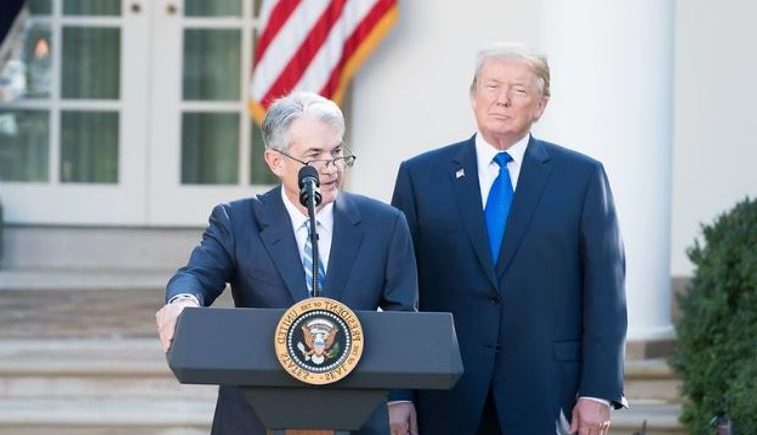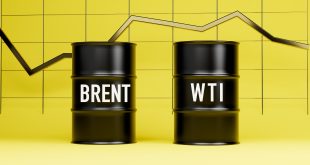US President Donald Trump, now well into his second term after returning to the White House in January 2025, is moving aggressively to extend his influence over the U.S. Federal Reserve — an effort that could redefine the central bank’s independence and reshape global financial markets.
In recent months, Trump has intensified his criticism of Federal Reserve Chair Jay Powell, calling for his resignation and attempting to dismiss Governor Lisa Cook. The moves form part of a broader push that analysts see as a direct challenge to the institutional guardrails that have long protected the Fed from political control.
Why the Fed’s Independence Matters
The Federal Reserve serves as the nation’s central bank, tasked with supervising financial institutions, controlling inflation, and steering monetary policy through the Federal Open Market Committee (FOMC). It operates under a dual mandate from Congress to “promote maximum employment and stable prices.”
Given the U.S. dollar’s global dominance, any attempt to politicize the Fed could reverberate across international markets, potentially undermining confidence in America’s financial governance.
From Trump’s Appointment to Trump’s Opposition
Ironically, Trump himself nominated Jay Powell as Fed Chair in 2017 during his first term. Yet their relationship deteriorated quickly after Powell resisted Trump’s calls for ultra-low interest rates. Since returning to office this year, Trump has made it clear that Powell’s tenure — due to expire in May 2026 — should end sooner rather than later.
At present, independent-minded governors such as Powell still outnumber Trump loyalists on the Fed’s board, but that balance could soon change as Trump seeks to fill upcoming vacancies.
How the Fed’s Structure Could Shift
The Federal Reserve’s Board of Governors consists of seven members appointed by the president for staggered 14-year terms — a design meant to shield it from short-term political pressure. Alongside the board, 12 regional Fed banks operate under its supervision, each led by a president approved by the board.
Currently, three sitting governors — Michelle Bowman, Christopher Waller, and Stephen Miran — are Trump appointees. Although Powell was also nominated by Trump, the president has publicly turned against him. Trump’s ongoing attempt to remove Governor Lisa Cook remains tied up in court after the Supreme Court blocked her dismissal pending a full hearing.
Can Trump Gain Control Over Interest Rates?
Even with a majority of loyalists on the Fed board, Trump cannot directly dictate lending rates. Those are determined by the 12-member FOMC, which includes the seven governors, the president of the New York Fed, and four rotating presidents from other regional banks.
However, an institutional quirk could give Trump more leverage than expected. The terms of all 12 Reserve Bank presidents expire simultaneously every five years — the next cycle ending on February 28, 2026. If Trump secures a board majority before that date, he could appoint loyalists to replace regional bank leaders, effectively gaining influence over the FOMC and its rate-setting power.
A Glimpse of What’s Coming
Trump has repeatedly stated that interest rates should be slashed to around 1% or even lower — a stance that economists warn could unsettle bond markets and fuel inflation expectations. At the most recent FOMC meeting, the committee approved a cautious 25-basis-point cut, while Miran, a Trump appointee, dissented in favor of a more aggressive 50-point reduction — a sign of where Trump’s influence might lead.
Beyond interest rates, analysts believe Trump could use his growing authority over the Fed to loosen financial regulations and advance his pro-cryptocurrency agenda. In March, he signed an executive order establishing a “Strategic Bitcoin Reserve and U.S. Digital Asset Stockpile,” signaling a major shift toward integrating digital assets into U.S. monetary policy.
Bigger Risk: Financial Stability
Experts warn that the most serious danger of Trump’s interference isn’t immediate inflation but the erosion of institutional credibility. If the Fed is perceived as an extension of the White House rather than an independent authority, global investors could lose faith in the dollar — threatening not just U.S. stability, but the foundation of the global financial system itself.
As Trump pushes to reshape the Federal Reserve in his own image, the world’s most powerful central bank faces a test unlike any in its modern history — one that could redefine the balance between politics and economic independence for years to come.

 Noor Trends News, Technical Analysis, Educational Tools and Recommendations
Noor Trends News, Technical Analysis, Educational Tools and Recommendations




